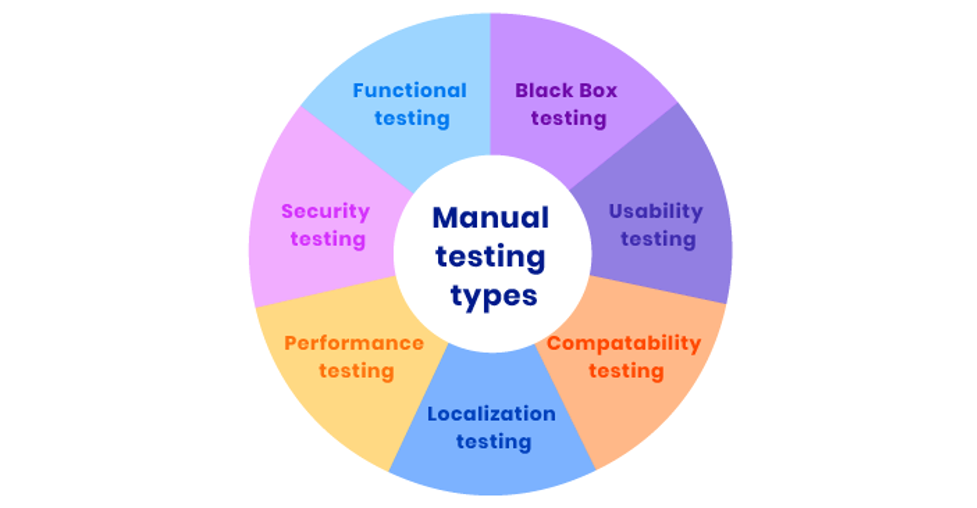
In the world of software development, testing has a special place to ensure that your software is bug-free, fully functional, and ready for market. When testing numerous applications, QA professionals rely on both manual work and automation tools to facilitate the testing process and achieve expected product quality.
However, in light of the rapid digitalization of various industries, you may wonder if manual testing approaches are still in demand. Let’s discuss the basic concepts behind manual software testing to prove its importance to your software company’s success and the value it brings to your software.
Table of Contents
What is Manual Software Testing?
Manual testing requires human efforts to manually execute test cases and identify bugs. Manual software testing is the primary step in the full software testing life cycle that helps the QA team ensure a product works flawlessly, is high-quality, and meets business and end user needs.
When critical bugs are identified, the QA team notes the conditions under which they were found in the defect tracking system. After that, they alert the development team to make code improvements.
Manual testing requires direct participation of QAs when designing test plans from the end user’s perspective. These test plans include test strategies, goals, the scope of testing, schedules, required resources, and deliverables for the manual testing process. Thus, a test plan allows manual testers to follow a sequence of steps to ensure that software works as intended from the user’s perspective.
Why does your Company need Manual Testing Services?
Manual software testing services provide clarity and transparency regarding the user experience and software performance. Their biggest value is enabling you to check all software flaws, pitfalls, and inconsistencies not after the product’s release but during its implementation. As a result, manual testing allows budding startups or any software company to fix software issues in a timely manner and avoid time-consuming testing activities and additional overhead.
In addition, manual software testing is a less expensive way to test products than automation testing. Conducting manual testing can help you understand if you need to test your software using automation tools. It can also add value to your software, as manual testing allows QA teams to collect accurate user feedback and identify software issues that are invisible to machine-based testing processes.
Types of Manual Software Testing Services
Below are some important types of software testing in which manual testing is applied:

Functional Testing
Functional testing aims to verify the product’s functionality against product specifications. In other words, the QA team can check if the software’s feature set works as stated in the documents and delivers the expected quality to end users.
Black-box Testing
Black-box testing requires the QA team to test functional and non-functional behavior and find software bugs when interacting directly with the product.
Usability Testing
By looking at user behavior, usability testing allows you to detect problems associated with the user experience and mitigate them in a timely manner.
Compatibility Testing
Compatibility testing is essential to software testing, as it helps QAs check if software works the same in different environments, such as in different browsers and databases and on various operating systems, platforms, and hardware.
Localization Testing
This type of testing allows you to verify that the product’s contents are displayed correctly regardless of the market in which your software is used.
Performance Testing
QA specialists conduct performance testing to determine your digital product’s speed, scalability, stability, and reliability and to identify issues.
Security Testing
Security testing is an important step to ensure that your product is free of security flaws and system vulnerabilities and is resistant to hacking attacks.
Pros and Cons of Manual Software Testing
Let’s take a quick look at the pros and cons of manual testing.
Pros:

- High-quality software. Manual software testing allows QA professionals to test as many scenarios as possible to meet end user requirements and ensure exceptional product quality.
- Early bug identification. The sooner bugs in the software development life cycle are identified and fixed, the less overhead you will have once the product is released.
- Verification of functional and non-functional requirements. With a manual testing approach, the QA team can verify critical software aspects, such as the product’s performance, usability, and user experience.
Cons:

- Time-consuming process. Although manual testing requires more time than automation testing, it is less expensive. Also, you can save time with a suitable business management model.
- Potential for human error. Although the QA team writes and executes test cases and various user scenarios and can introduce errors, they also have a personalized view of the test results and can gain valuable and unique experience from manual testing.
Conclusion
All in all, manual software testing services are vital to ensure your target users have a smooth and efficient experience with your software. Manual software testing helps you identify nuances that testers may overlook with automation tools. In addition, manual testing is an affordable way to achieve your business goals and maintain quality. As a result, you will acquire high-quality products, satisfy users, and meet your release deadlines.